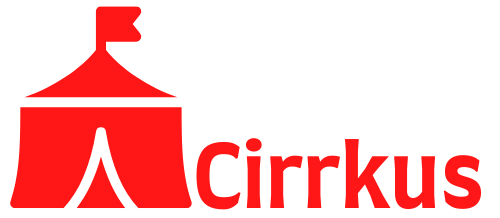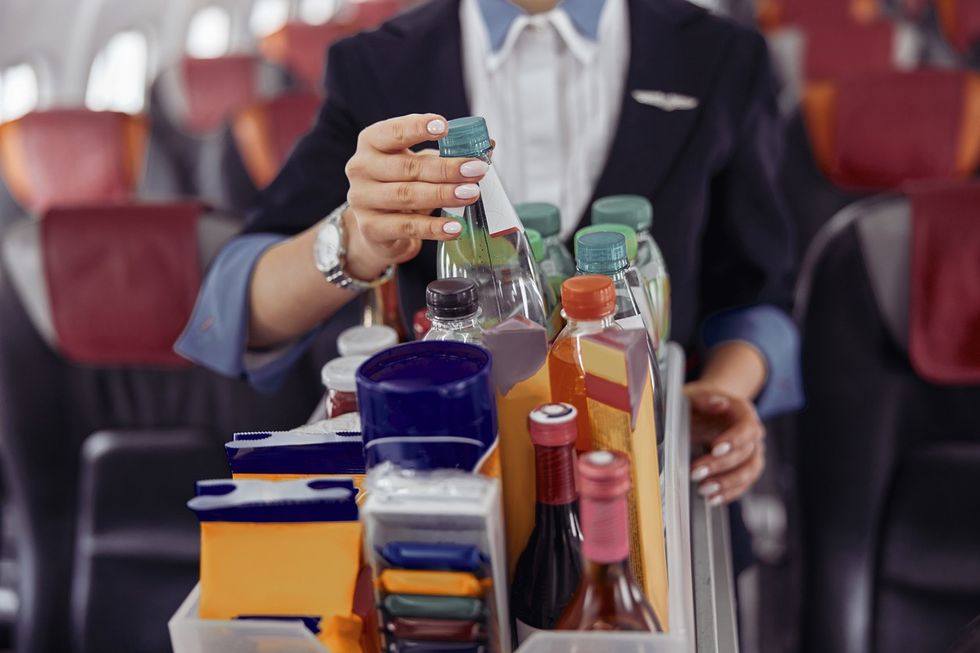No matter where you’re sitting on the plane, ordering a refreshing beverage during cabin service is one of the perks of flying that everyone can enjoy. For some, that means enjoying a cocktail or glass of wine while watching a movie. For others, it could be a more functional decision to sip on a juice, seltzer, or ice water to quench their thirst. But whatever the case may be, there are a few beverage options you might want to steer clear of, according to flight attendants.
RELATED: U.S. Travelers Say This Is the #1 Worst Airline To Fly on Right Now.
Coffee and tea are “absolutely disgusting” on planes.
You don’t have to be a microbiologist or virologist to know that planes aren’t the cleanest spaces. From the communal toilets to the tray table right in front of you, many surfaces are teeming with bacteria, germs, and other nasty microorganisms. But in a video posted to TikTok, former flight attendant Kat Kamalani warns that it’s not just your surroundings that could be a problem, but also what you’re picking from the beverage cart.
“Never consume any liquid that is not in a can or a bottle!” she warns.
While it might seem like a bizarre limitation, Kamalani explains it has to do with a routine maintenance issue on planes. Specifically, it comes down to the onboard water tanks, which she says are “disgusting” and “never cleaned.”
Unfortunately, this rules out one of the most common mid-flight orders.
“Talk to a flight attendant, [and] we rarely, rarely, drink the coffee or tea. They come from the same water tank,” she explains. “So when you’re drinking that coffee and tea that comes from that hot water, it’s absolutely disgusting.”
And it’s not just the tanks themselves: Kamalani warns that the coffee machines sit precariously close to the lavatories. And while carafes and pots are taken out and cleaned between flights, she clarifies that the units themselves “are rarely cleaned unless they are broken.”
Research backs up her claims.
Science backs up Kamalani’s claims. In a 2019 study conducted by the Hunter College NYC Food Policy Center at the City University of New York, researchers found that dirty water is a troublingly common occurrence on flights.
According to the team, seven out of 11 major international airlines were deemed to have poor water quality. It’s even worse for domestic flights, with all but one of the 12 regional carriers tested coming back as potentially unhealthy.
RELATED: Delta Flight Attendant Reveals Sneaky Way Airlines Trick You Into Missing Your Flight.
You might also want to avoid a popular soda.
However, not all prepackaged beverages are technically flight-appropriate. According to flight attendants, there’s one exception to the canned or bottled rule: Diet Coke and Coke Zero.
While they might be wildly popular lower-calorie beverages back on the ground, flight crews have grown to despise serving them mid-flight because these carbonated drinks take forever to settle down fast enough to dole them out efficiently.
“I don’t know the science behind it, but Diet Coke and Coke Zero are just way more fizzy to pour than other drinks and take forever to fizz down when pouring!” one Reddit user who claimed to be a flight attendant replied in an Ask Me Anything (AMA) thread. “I usually just give the passenger the whole can if they ask because I could have served three more passengers by [the] time the cup is full.”
So, is the pressurized cabin to blame? Surprisingly, no: The slightly higher viscosity of the diet beverages produces more stable bubbles, giving them a longer-lasting foam and making them much more difficult to pour quickly, according to McGill University. Of course, this places flight attendants in a tighter time crunch than someone serving the same beverage at a restaurant.
RELATED: 6 Things You Should Never Eat or Drink on a Plane If You’re Over 60.
It’s still important to drink on a flight.
Despite all the “don’ts” of ordering drinks on an airplane, it’s still a good idea to sip on something due to how easy it is to get dehydrated onboard.
“Airplane cabins have low humidity levels, as low as 5 to 20 percent,” Bob Bacheler, managing director of Flying Angels, Inc., previously told Best Life. “This is lower than the Sahara Desert, which can lead to dehydration.”
He warns that on medium-to-long-haul flights, dehydration can exacerbate symptoms of jet lag, such as fatigue and headaches. If you’re concerned about the water quality, consider packing a reusable water bottle in your carry-on that you can fill up in the terminal after you pass through security.
Content shared from bestlifeonline.com.

